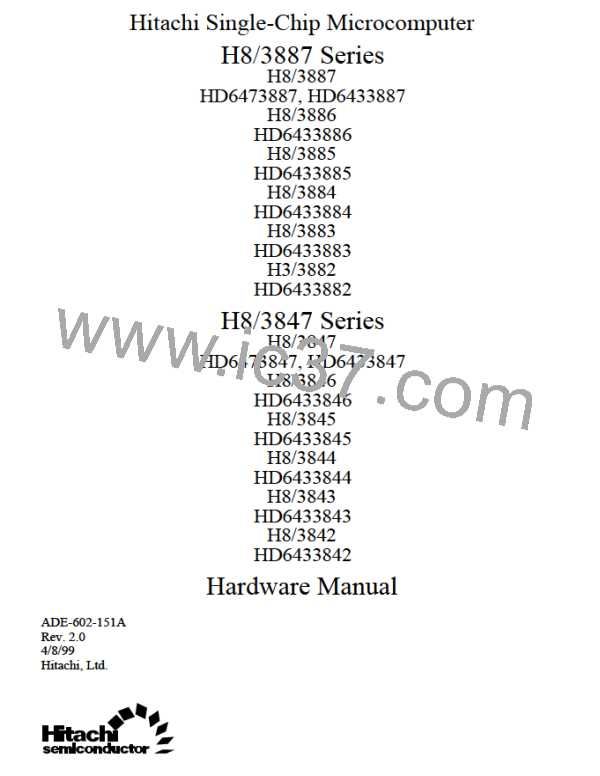(4) After reception is completed, IRRS1 is set to 1 in IRR1.
(5) Read the transfer data from SDRL/SDRU.
8-bit transfer mode: SDRL
16-bit transfer mode: Upper byte from SDRU, lower byte from SDRL
(6) If the serial clock continues to be input after the end of reception, this is regarded as an overrun
state, and the ORER flag is set to 1 in SCSR1 (consequently, reception is not performed).
Simultaneous transmitting and receiving: The procedure for simultaneously transmitting and
receiving data is as follows.
(1) Set SO1, SI1, and SCK1 all to 1 in PMR2 to designate the SO1, SI1, and SCK1 pin functions.
If necessary, also designate the SO1 pin as an NMOS open-drain output with bit POF1 in
PMR2.
(2) Clear SNC1 in SCR1 to 0, clear or set SNC0 to 0 or 1, and clear MRKON to 0, to select 8-bit
synchronous mode or 16-bit synchronous mode, and select the serial clock with bits CKS3 to
CKS0. When data is written to SCR1 with MRKON in SCR1 cleared to 0, the internal state of
SCI1 is initialized.
(3) Write the transfer data to SDRL/SDRU.
8-bit transfer mode: SDRL
16-bit transfer mode: Upper byte to SDRU, lower byte to SDRL
(4) When STF is set to 1 in SCSR1, SCI1 starts operating and transmit data is output from the SO1
pin, or receive data is input from the SI1 pin.
(5) After transmission/reception is completed, IRRS1 is set to 1 in IRR1.
(6) Read the transfer data from SDRL/SDRU.
8-bit transfer mode: SDRL
16-bit transfer mode: Upper byte from SDRU, lower byte from SDRL
When an internal clock is used, the serial clock is output from the SCK1 pin simultaneously with
transmit data output. When transmission ends, the serial clock is not output until the start flag is
next set to 1. During this interval, the SO1 pin continuously outputs the last bit of the previous
data.
When an external clock is used, data is transmitted and received in synchronization with the clock
input from the SCK1 pin. If the serial clock continues to be input after the end of
transmission/reception, this is regarded as an overrun state, and the ORER flag is set to 1 in
SCSR1 (consequently, transmission/reception is not performed).
262

 ETC [ ETC ]
ETC [ ETC ]